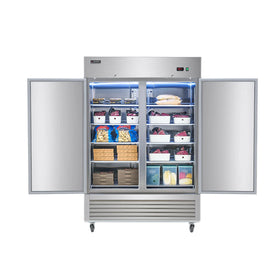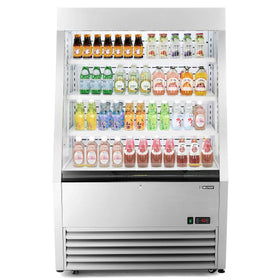Understanding the Need – The State of Blood Sugar Management
Managing blood sugar is no longer a niche health goal — it’s a global public health priority.
- 537 million adults (1 in 10) worldwide are living with diabetes, and this number is projected to rise to 643 million by 2030. (IDF Diabetes Atlas, 2021)
- In the U.S. alone, over 96 million adults have prediabetes, with more than 80% unaware of their condition. (CDC, 2023)
- Even outside of diagnosed cases, many people are seeking low-glycemic eating to:
- Avoid energy crashes
- Improve metabolic health
- Maintain a healthy weight
What does a blood sugar–friendly diet look like?
Based on guidelines from the American Diabetes Association (ADA) and Harvard T.H. Chan School of Public Health, the following principles are key:
- High fiber from vegetables, legumes, and whole grains
- Lean proteins to stabilize blood glucose
- Low added sugars
- Controlled portions of complex carbs
- Focus on glycemic index (GI) and glycemic load (GL)

Recipes Designed for Blood Sugar Balance
Delicious, easy-to-prepare meals to help manage glucose levels without sacrificing flavor.
Recipe 1: Lemon-Herb Grilled Salmon with Quinoa & Greens
|
Feature |
Details |
|
Prep Time |
10 minutes |
|
Cook Time |
15 minutes |
|
Nutritional Focus |
Omega-3s, high protein, low GI, fiber-rich |
|
Best For |
Dinner, meal prep, high-satiety eating |
Ingredients:
- 2 salmon fillets (approx. 150g each)
- 1 cup cooked quinoa
- 2 cups mixed leafy greens (spinach, arugula, kale)
- 1 tbsp olive oil
- Juice of ½ lemon
- Garlic powder, black pepper, parsley to taste
Steps:
- Rub salmon with olive oil, lemon juice, garlic, pepper, and parsley.
- Grill or pan-sear over medium-high heat for 3–4 minutes per side.
- Serve with quinoa and fresh greens drizzled with a little extra lemon or olive oil.
Recipe 2: Lentil & Vegetable Stew
|
Feature |
Details |
|
Prep Time |
15 minutes |
|
Cook Time |
40 minutes (or pressure-cooked in 20) |
|
Nutritional Focus |
High fiber, plant-based protein, low glycemic load |
|
Best For |
Batch cooking, lunch, warming meals |
Ingredients:
- 1 cup dry lentils (green or brown), rinsed
- 1 onion, chopped
- 2 carrots, chopped
- 2 celery stalks, chopped
- 3 cups low-sodium vegetable broth
- 1 tsp cumin, ½ tsp turmeric
- 1 tbsp olive oil
Steps:
- Heat oil, sauté onion, carrots, and celery for 5 minutes.
- Add lentils, spices, and broth. Bring to boil, then simmer 30–40 min.
- Adjust seasoning and serve with a sprinkle of parsley or lemon zest.
Recipe 3: No-Sugar-Added Chia Pudding
|
Feature |
Details |
|
Prep Time |
5 minutes (+ overnight soak) |
|
Cook Time |
No cooking required |
|
Nutritional Focus |
Slow carbs, healthy fats, fiber, naturally sweetened |
|
Best For |
Breakfast or dessert without sugar spikes |
Ingredients:
- 3 tbsp chia seeds
- 1 cup unsweetened almond milk
- ½ tsp vanilla extract
- Optional: a few sliced berries or cinnamon
Steps:
- Stir chia seeds, almond milk, and vanilla in a jar.
- Let sit for 5 minutes, stir again to prevent clumping.
- Cover and refrigerate overnight. Top with berries before serving.
Smart Eating Habits for Blood Sugar Balance
Fridge organization is helpful — but eating order matters too
Along with prepping your meals in advance, how you eat can significantly impact your glucose response — even if you’re eating the same foods.
The Glucose-Friendly Eating Sequence
Inspired by nutrition science and popularized in The Glucose Revolution by Jessie Inchauspé:
1. Eat vegetables first – Their fiber coats the intestinal walls, slowing sugar absorption.
2. Follow with proteins and fats – These help blunt blood sugar spikes and increase satiety.
3. Finish with carbohydrates – Especially when they’re whole or complex.
This simple shift can reduce post-meal blood sugar spikes by up to 75% in some studies, even without changing what’s on your plate.
Fridge Prep + Eating Order = Blood Sugar Stability
To make this easier, organize your fridge with this eating sequence in mind:
- Front-load with pre-washed veggies (like celery, bell pepper, cherry tomatoes) for easy first bites
- Pre-cook proteins such as hard-boiled eggs, grilled chicken, or tofu for the second layer
- Store carbs separately, like cooked brown rice, whole grain pasta, or roasted potatoes in portioned containers
Also consider packing meals in glass containers with dividers, so each section follows the eating order and makes it easier to stay on track — even at work or school.










